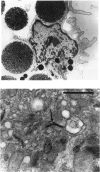Abstract
Oral mucosal Langerhans cells (OMLC) may have an important role in the induction of immune responses to oral pathogens. In this study, anti-HLA-DR antibody-coated immunomagnetic beads were used to purify OMLC from suspensions of normal human buccal epithelium and the capacity of the purified cells to function as accessory cells (AC) was investigated. Electron microscopy was used to show that the purified cells possessed all recognized ultrastructural features previously described in epidermal Langerhans cells. Using T lymphocyte proliferation assays in hanging drop microcultures, it was found that purified OMLC could function as AC for responses to concanavalin A by autologous T cells. Purification of OMLC from small biopsies of oral mucosa has enabled us to show that OMLC, like epidermal Langerhans cells, can function as AC in vitro.
Full text
PDF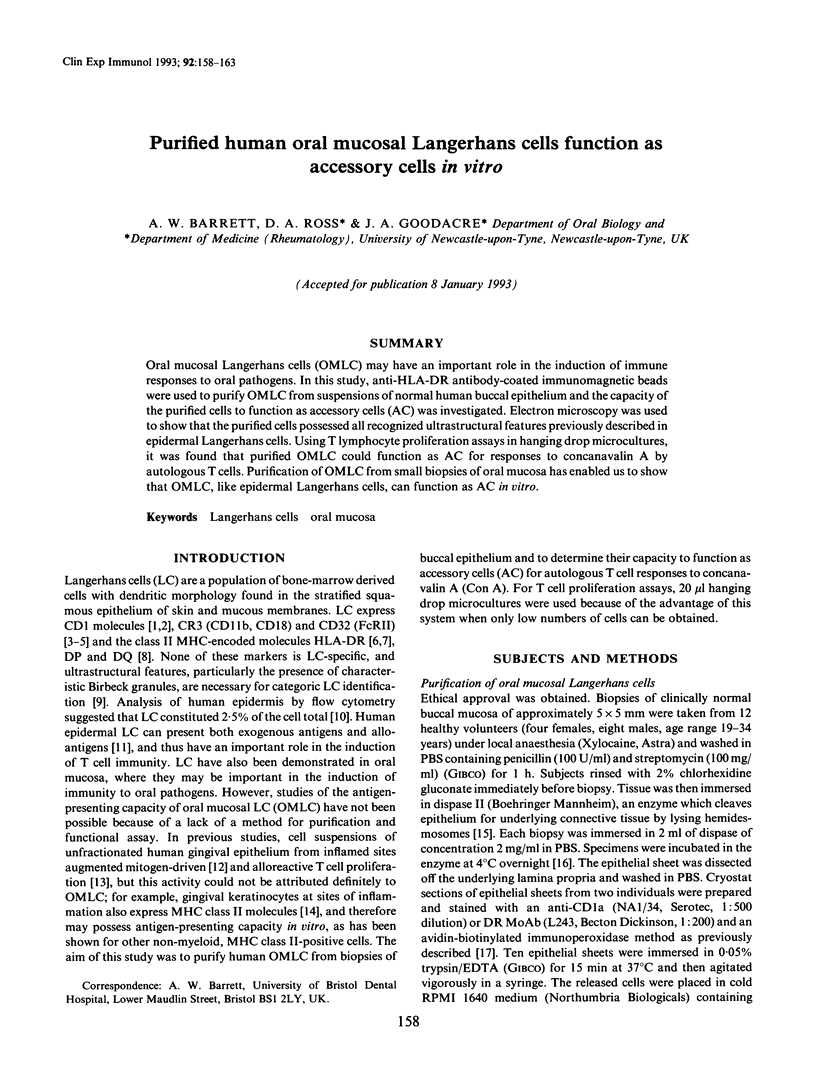
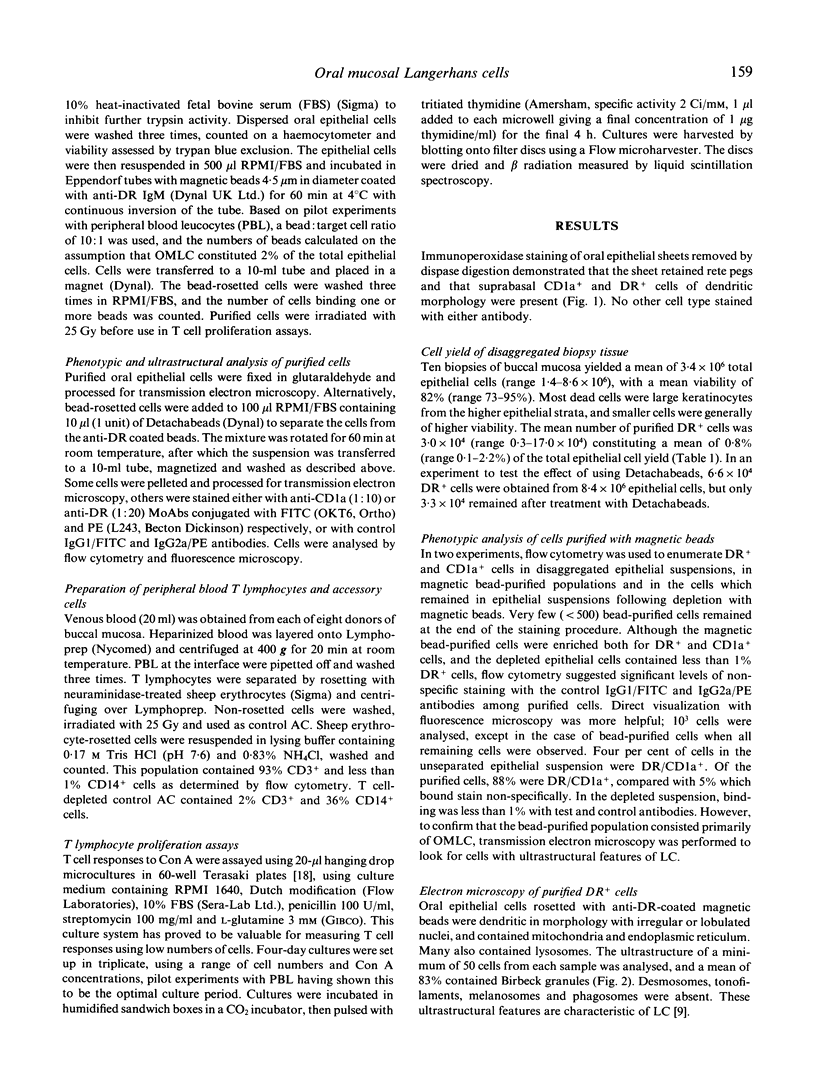
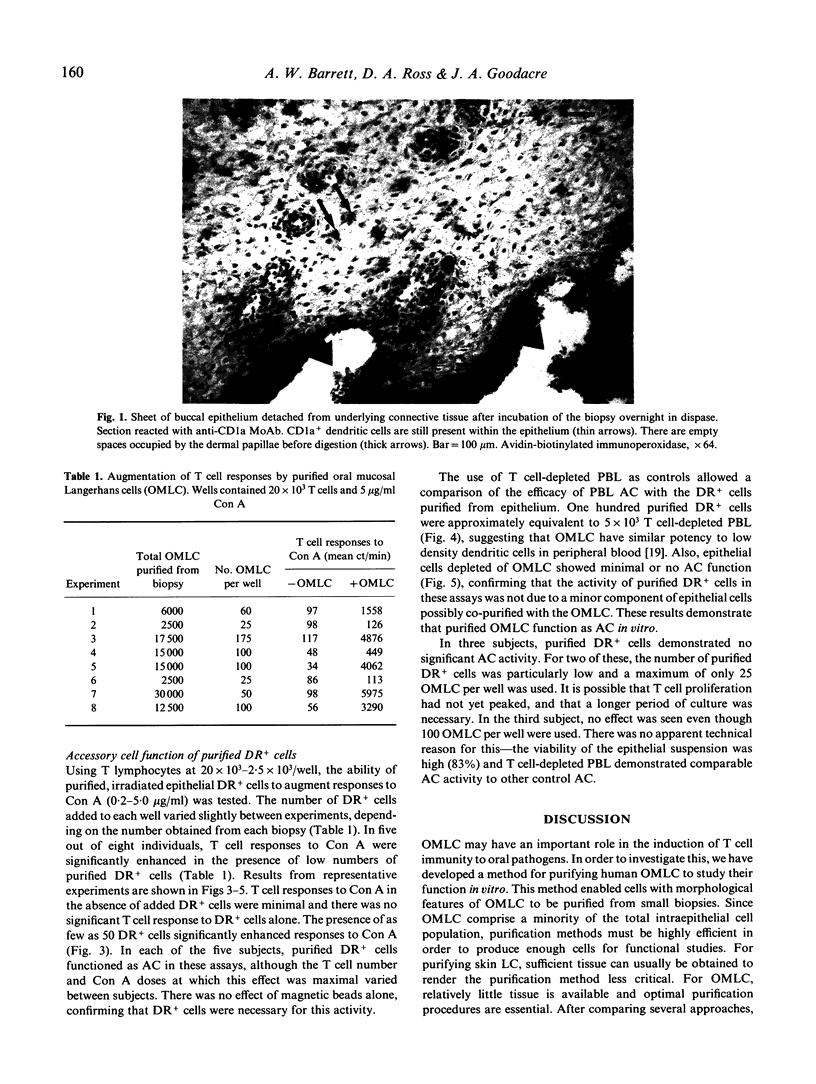
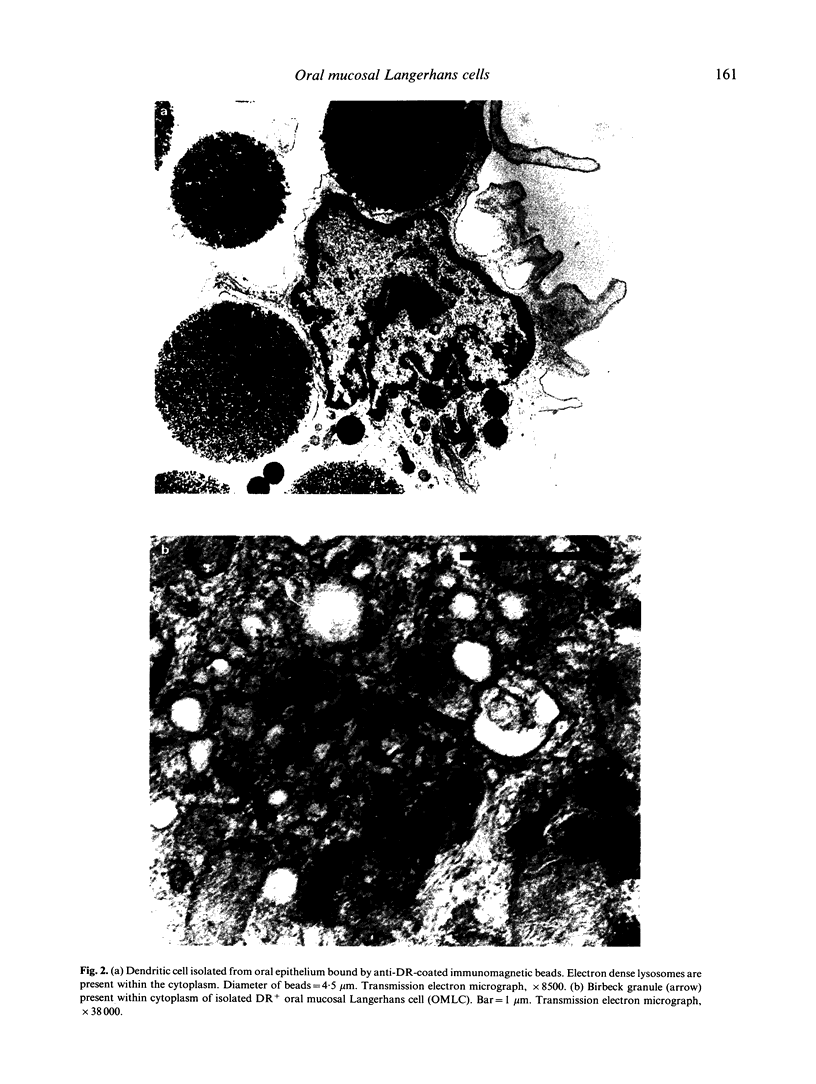
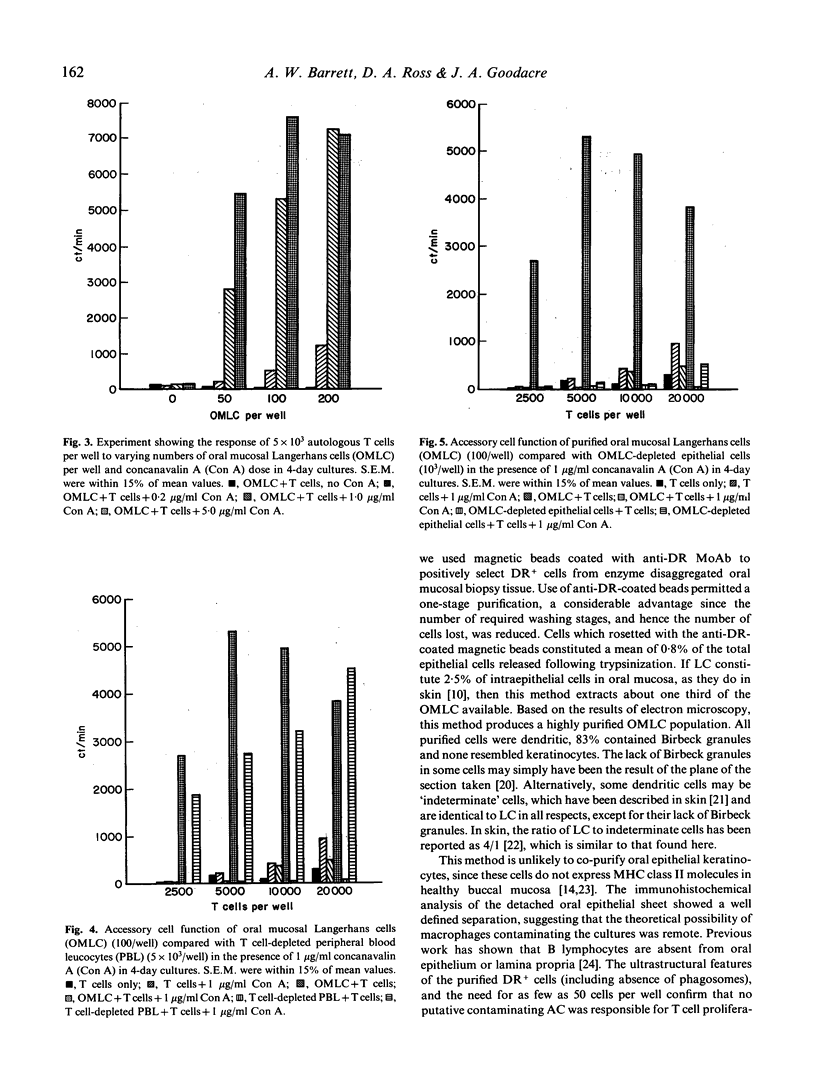
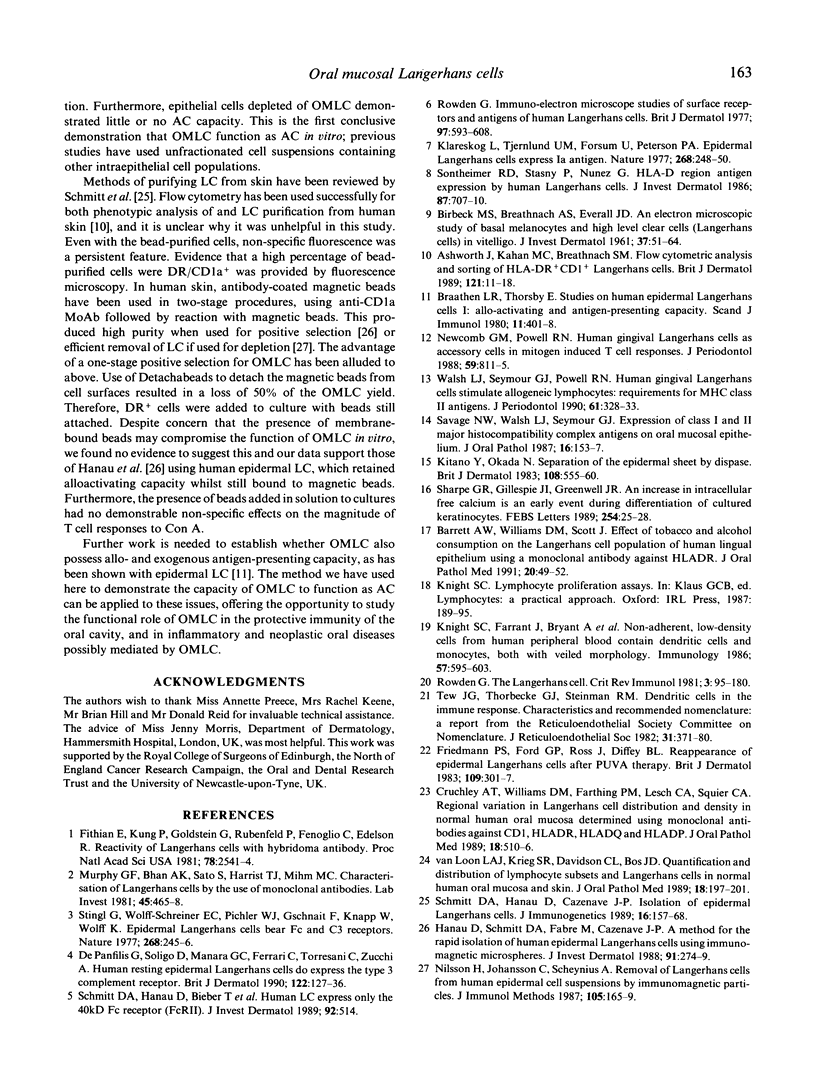
Images in this article
Selected References
These references are in PubMed. This may not be the complete list of references from this article.
- Ashworth J., Kahan M. C., Breathnach S. M. Flow cytometric analysis and sorting of HLA-DR+CD1+ Langerhans cells. Br J Dermatol. 1989 Jul;121(1):11–18. doi: 10.1111/j.1365-2133.1989.tb01394.x. [DOI] [PubMed] [Google Scholar]
- Barrett A. W., Williams D. M., Scott J. Effect of tobacco and alcohol consumption on the Langerhans cell population of human lingual epithelium determined using a monoclonal antibody against HLADR. J Oral Pathol Med. 1991 Feb;20(2):49–52. doi: 10.1111/j.1600-0714.1991.tb00888.x. [DOI] [PubMed] [Google Scholar]
- Braathen L. R., Thorsby E. Studies on human epidermal Langerhans cells. I. Allo-activating and antigen-presenting capacity. Scand J Immunol. 1980;11(4):401–408. doi: 10.1111/j.1365-3083.1980.tb00006.x. [DOI] [PubMed] [Google Scholar]
- Cruchley A. T., Williams D. M., Farthing P. M., Lesch C. A., Squier C. A. Regional variation in Langerhans cell distribution and density in normal human oral mucosa determined using monoclonal antibodies against CD1, HLADR, HLADQ and HLADP. J Oral Pathol Med. 1989 Oct;18(9):510–516. doi: 10.1111/j.1600-0714.1989.tb01353.x. [DOI] [PubMed] [Google Scholar]
- De Panfilis G., Soligo D., Manara G. C., Ferrari C., Torresani C., Zucchi A. Human normal-resting epidermal Langerhans cells do express the type 3 complement receptor. Br J Dermatol. 1990 Feb;122(2):127–136. doi: 10.1111/j.1365-2133.1990.tb08258.x. [DOI] [PubMed] [Google Scholar]
- Fithian E., Kung P., Goldstein G., Rubenfeld M., Fenoglio C., Edelson R. Reactivity of Langerhans cells with hybridoma antibody. Proc Natl Acad Sci U S A. 1981 Apr;78(4):2541–2544. doi: 10.1073/pnas.78.4.2541. [DOI] [PMC free article] [PubMed] [Google Scholar]
- Friedmann P. S., Ford G., Ross J., Diffey B. L. Reappearance of epidermal Langerhans cells after PUVA therapy. Br J Dermatol. 1983 Sep;109(3):301–307. doi: 10.1111/j.1365-2133.1983.tb03545.x. [DOI] [PubMed] [Google Scholar]
- Hanau D., Schmitt D. A., Fabre M., Cazenave J. P. A method for the rapid isolation of human epidermal Langerhans cells using immunomagnetic microspheres. J Invest Dermatol. 1988 Sep;91(3):274–279. doi: 10.1111/1523-1747.ep12470445. [DOI] [PubMed] [Google Scholar]
- Kitano Y., Okada N. Separation of the epidermal sheet by dispase. Br J Dermatol. 1983 May;108(5):555–560. doi: 10.1111/j.1365-2133.1983.tb01056.x. [DOI] [PubMed] [Google Scholar]
- Klareskog L., Tjernlund U., Forsum U., Peterson P. A. Epidermal Langerhans cells express Ia antigens. Nature. 1977 Jul 21;268(5617):248–250. doi: 10.1038/268248a0. [DOI] [PubMed] [Google Scholar]
- Knight S. C., Farrant J., Bryant A., Edwards A. J., Burman S., Lever A., Clarke J., Webster A. D. Non-adherent, low-density cells from human peripheral blood contain dendritic cells and monocytes, both with veiled morphology. Immunology. 1986 Apr;57(4):595–603. [PMC free article] [PubMed] [Google Scholar]
- Murphy G. F., Bhan A. K., Sato S., Harrist T. J., Mihm M. C., Jr Characterization of Langerhans cells by the use of monoclonal antibodies. Lab Invest. 1981 Nov;45(5):465–468. [PubMed] [Google Scholar]
- Newcomb G. M., Powell R. N. Human gingival Langerhans cells as accessory cells in mitogen induced T cell responses. J Periodontol. 1988 Dec;59(12):811–815. doi: 10.1902/jop.1988.59.12.811. [DOI] [PubMed] [Google Scholar]
- Nilsson H., Johansson C., Scheynius A. Removal of Langerhans cells from human epidermal cell suspensions by immunomagnetic particles. J Immunol Methods. 1987 Dec 24;105(2):165–169. doi: 10.1016/0022-1759(87)90262-6. [DOI] [PubMed] [Google Scholar]
- Rowden G. Immuno-electron microscopic studies of surface receptors and antigens of human Langerhans cells. Br J Dermatol. 1977 Dec;97(6):593–608. doi: 10.1111/j.1365-2133.1977.tb14266.x. [DOI] [PubMed] [Google Scholar]
- Rowden G. The Langerhans cell. Crit Rev Immunol. 1981 Dec;3(2):95–180. [PubMed] [Google Scholar]
- Savage N. W., Walsh L. J., Seymour G. J. Expression of class I and class II major histocompatibility complex antigens on oral mucosal epithelium. J Oral Pathol. 1987 Mar;16(3):153–157. doi: 10.1111/j.1600-0714.1987.tb01484.x. [DOI] [PubMed] [Google Scholar]
- Schmitt D. A., Hanau D., Cazenave J. P. Isolation of epidermal Langerhans cells. J Immunogenet. 1989 Apr;16(2):157–168. doi: 10.1111/j.1744-313x.1989.tb00458.x. [DOI] [PubMed] [Google Scholar]
- Sharpe G. R., Gillespie J. I., Greenwell J. R. An increase in intracellular free calcium is an early event during differentiation of cultured human keratinocytes. FEBS Lett. 1989 Aug 28;254(1-2):25–28. doi: 10.1016/0014-5793(89)81002-6. [DOI] [PubMed] [Google Scholar]
- Sontheimer R. D., Stastny P., Nũnez G. HLA-D region antigen expression by human epidermal Langerhans cells. J Invest Dermatol. 1986 Dec;87(6):707–710. doi: 10.1111/1523-1747.ep12456670. [DOI] [PubMed] [Google Scholar]
- Stingl G., Wolff-Schreiner E. C., Pichler W. J., Gschnait F., Knapp W., Wolff K. Epidermal Langerhans cells bear Fc and C3 receptors. Nature. 1977 Jul 21;268(5617):245–246. doi: 10.1038/268245a0. [DOI] [PubMed] [Google Scholar]
- Tew J. G., Thorbecke G. J., Steinman R. M. Dendritic cells in the immune response: characteristics and recommended nomenclature (A report from the Reticuloendothelial Society Committee on Nomenclature). J Reticuloendothel Soc. 1982 May;31(5):371–380. [PubMed] [Google Scholar]
- Walsh L. J., Seymour G. J., Powell R. N. Human gingival Langerhans cells stimulate allogeneic lymphocytes: requirement for MHC class II antigens. J Periodontol. 1990 Jun;61(6):328–333. doi: 10.1902/jop.1990.61.6.328. [DOI] [PubMed] [Google Scholar]
- van Loon L. A., Krieg S. R., Davidson C. L., Bos J. D. Quantification and distribution of lymphocyte subsets and Langerhans cells in normal human oral mucosa and skin. J Oral Pathol Med. 1989 Apr;18(4):197–201. doi: 10.1111/j.1600-0714.1989.tb00762.x. [DOI] [PubMed] [Google Scholar]




